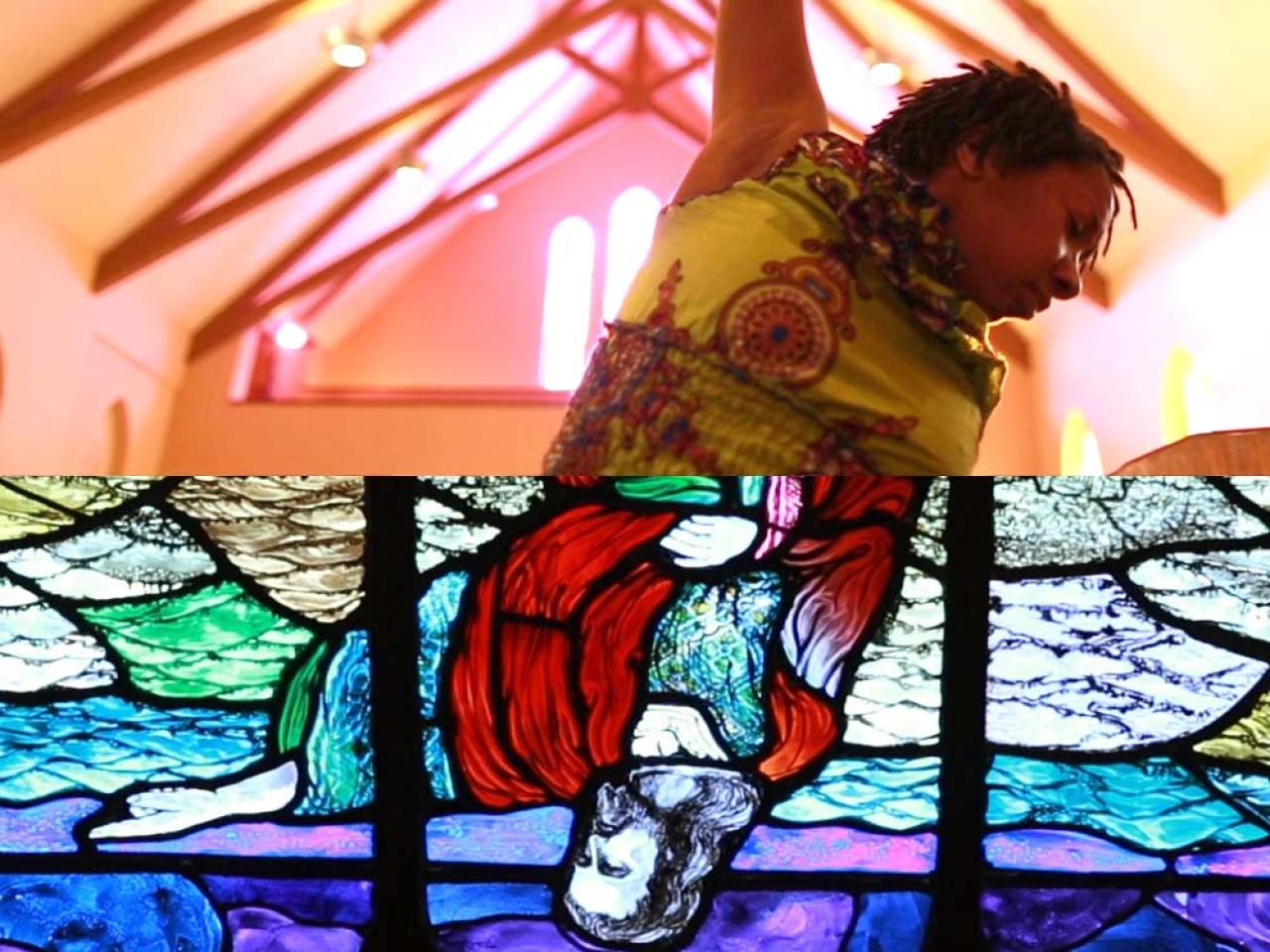Meet New Day: Josh Aaseng & T. Geronimo Johnson

As writers and filmmakers, we’re drawn to human stories that bridge gaps between people, and creating art that touches hearts and changes minds. And as Christian-raised artists, we believe that until we de-couple whiteness from America’s dominant religion, we won’t achieve true equality. Our film Manifest Destiny Jesus is driven by the question: How do we learn to care about people who are unlike us? This includes tackling gentrification and the displacement of Black families.
Manifest Destiny Jesus examines how portraying Jesus as white has exacerbated racial divides in America for both believers and non-believers. Portraying Jesus as white has contributed to the ongoing legacy of segregation in churches and has racialized police violence. Also, while many people relegate the white supremacists’ and colonialists’ concept of “manifest destiny” to history, we examine how gentrification continues this pattern today.
Our film is different because it treats urban displacement as a symptom rather than a cause, and our approach has proved to be persuasive. We weave the stories of a white family who adopted two black boys, an African American dancer, and an interracial Seattle congregation reckoning with their stained glass image of Christ. These stories, intertwined with the lives of the larger gentrifying community and historical interviews, teach us that there is a better way forward, but it takes courage. We challenge modern day images, church iconography, and beliefs about Jesus based on our firm belief that Jesus was not white.
Many people have said that before watching our film, they’d never thought about the connection between religion and gentrification, the racial wealth gap, and racial violence in America. Changing hearts and minds like theirs on the relationship between a white-dominated Christianity and racism is our film’s ultimate goal. This is the reason the documentary begins with these words: “This film is dedicated to the future memory of white supremacy.”